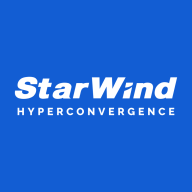

Panasas ActiveStor and StarWind Storage Appliance are competing in enterprise-level data storage solutions. Panasas ActiveStor stands out due to its scalability and reliability, while StarWind Storage Appliance is recognized for cost-effectiveness and advanced virtualization support.
Features: Panasas ActiveStor is known for high-performance parallel storage capabilities, seamless scalability, and strong data protection features. StarWind Storage Appliance features cost-efficient virtualization, hyper-converged infrastructure options, and integrated data protection strategies.
Ease of Deployment and Customer Service: Panasas ActiveStor offers straightforward deployment and comprehensive technical support, focusing on streamlined experiences for large-scale deployments. StarWind Storage Appliance provides flexible integration into existing environments and responsive customer assistance, excelling in adaptability.
Pricing and ROI: Panasas ActiveStor comes with a higher upfront cost but offers strong ROI through its durability and scalability. StarWind Storage Appliance, with lower initial costs, provides attractive ROI through virtualization efficiencies and reduced long-term operational expenses.

In our most recent product, the ActiveStor Ultra, Panasas has developed a new approach called Dynamic Data Acceleration Technology. It uses a carefully balanced set of HDDs, SATA SSD, NVMe SSD, NVDIMM, and DRAM to provide a combination of excellent performance and low cost per terabyte.
• HDDs will provide high bandwidth data storage if they are never asked to store anything small and only asked to do large sequential transfers. Therefore, we only store large Component Objects on our low-cost HDDs.
• SATA SSDs provide cost-effective and highbandwidth storage as a result of not having any seek times, so that’s where we keep our small Component Objects.
• NVMe SSDs are built for very low latency accesses, so we store all our metadata in a database and keep that database on an NVMe SSD. Metadata accesses are very sensitive to latency, whether it is POSIX metadata for the files being stored or metadata for the internal operations of the OSD.
• An NVDIMM (a storage class memory device) is the lowest latency type of persistent storage device available, and we use one to store our transaction logs: user data and metadata being written by the application to the OSD, plus our internal metadata. That allows PanFS to provide very low latency commits back to the application.
• We use the DRAM in each OSD as an extremely low latency cache of the most recently read or written data and metadata.
To gain the most benefit from the SATA SSD’s performance, we try to keep the SATA SSD about 80% full. If it falls below that, we will (transparently and in the background) pick the smallest Component Objects in the HDD pool and move them to the SSD until it is about 80% full. If the SSD is too full, we will move the largest Component Objects on the SSD to the HDD pool. Every ActiveStor Ultra Storage Node performs this optimization independently and continuously. It’s easy for an ActiveStor Ultra to pick which Component Objects to move, it just needs to look in its local NVMe-based database.
For SMB and Enterprises who are looking for high performance primary storage for server virtualization, VDI, database and Big Data scenarios, or inexpensive secondary backup tier, our solution is StarWind Storage Appliance. It unifies commodity servers, disks and flash, and associated software into an easily scalable storage platform.
Additionally, the appliance features an optional gateway to Azure public cloud, which helps to implement an effective Disaster Recovery plan or meet regulatory requirements. StarWind SA scales up by adding individual disks and flash modules, or JBODs, while adding ready controller nodes allows scaling out.
StarWind SA targets those, who need high-performance primary storage or secondary storage for backup. In case there is a whole virtualization infrastructure to build from scratch, StarWind HCA will come in handy. Otherwise, if all the required hardware is present, StarWind Virtual SAN will be enough to build a high-performance virtualization setup.
We monitor all NAS reviews to prevent fraudulent reviews and keep review quality high. We do not post reviews by company employees or direct competitors. We validate each review for authenticity via cross-reference with LinkedIn, and personal follow-up with the reviewer when necessary.